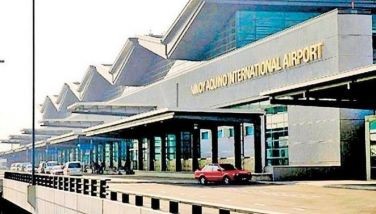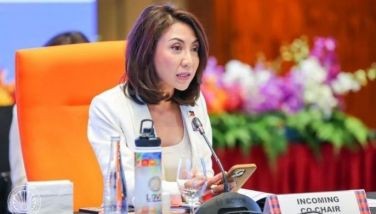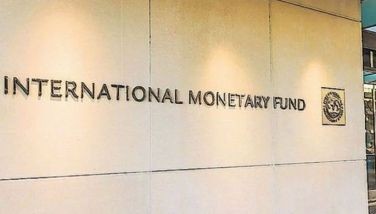Philippines internet divide expanding

According to an April 4 World Bank blog report titled “Upgrading Philippine Internet for Faster and Inclusive Growth,” jointly written by Naoto Kanehira, Mitch Abdon and Mary Grace Mirandilla-Santos, the access gap in broadband internet between the rich and the poor in the Philippines has been rapidly expanding, making digital opportunities out of reach for many.
According to their report, from 2019 to 2022, access to fixed broadband increased by around 20 percentage points for the richest 40 percent of the population, against less than three percentage points for the poorest, and around seven percentage points for the lower-middle income group.
In three years, their report continued, the broadband access gap increased by 16 percentage points, from 26 to 42, between the top two and bottom two income quintiles.
They pointed out that broadband internet stands out for its increasing disparity in access in contrast to other public and private services, utilities, and goods. They noted that while the Philippines has made progress toward universal access to safe drinking water, electricity, and education, accompanied by a decrease in inequity; similarly, the availability of cars, air conditioning, and bank loans has increased. However, broadband internet penetration remains low, and the inequity in access has significantly widened.
Thus, they warned, “If this trend continues, the digital divide may grow as the key determinant of broader inequity in access to opportunities, and digitalization of public and private services may not effectively contribute to poverty reduction.”
Poor internet limits access to opportunities
Furthermore, their report said, “Despite the potential of digitalization in spurring economic growth, poor internet infrastructure constrains digital opportunities for citizens and businesses. If majority of children from low-income families cannot learn with computers connected to internet either in schools or at home, the large deficits in digital skills in the Philippines will not prepare youth and adults for future jobs. Poor internet access also leads to poor technology adoption and limited innovation and productivity growth by firms, especially the micro, small, and medium enterprises (MSMEs).
Governments worldwide, they pointed out, are tasked with making fiscal policy decisions that strike a balance between generating revenue from spectrum allocations, funding universal service initiatives, and ensuring the sustainable growth of the telecommunications sector.
In the Philippines, their report continued, the ratio of spectrum revenue as a percentage share of total government revenue is three to 10 times lower than its ASEAN middle-income peers. The Philippines also collects less direct or indirect taxes from the sector through universal service obligation payment and corporate income tax.
In an earlier blog post on Jan. 25 this year, the same three authors had noted that 30 years after it was first connected to the internet, the Philippines still has weak broadband infrastructure. The problem is a serious one, they flagged, because digitalization—a strong accelerator of inclusive growth, job creation, climate resilience, and sustainability—is not possible without good access to the Internet.
The Philippines, they said, is an outlier in the Association of Southeast Asian Nations (ASEAN). In 2022, just 33 percent of households had access to fixed broadband, and just 70 percent of the population had an active mobile broadband subscription. Both figures are well below the ASEAN averages of 41 percent and 101 percent, respectively. The Philippines accounted for more than half of the ASEAN population that remains unconnected to mobile broadband.
Broadband Internet is also more expensive in the Philippines than it is in neighboring countries. The annual charge for fixed broadband represents 11 percent of per capita gross national income (GNI)—twice as much as the ASEAN average. Mobile broadband costs two percent of per capita GNI—1.5 times more than the ASEAN average.
Their April 4 report, however, took note of calls for further support from the government to address infrastructure challenges inhibiting the equitable delivery of connectivity across the country.
The Philippine Private Sector Advisory Council (PSAC), in an April 19 meeting with President Marcos, had presented what they considered as the necessary steps to uplift the country’s internet infrastructure and attain its digitalization goals.
Sabin Aboitiz, PSAC lead convenor and Aboitiz Group president and CEO, presided over the meeting, together with Henry Aguda, president and CEO of UnionDigital Bank and leader of PSAC’s digital infrastructure sector; Ernest Cu, president and CEO of Globe and Al Panlilio, former president and CEO of PLDT-Smart.
During his “State of the Internet” presentation, Globe’s Cu shared PSAC’s proposed legislative and policy measures to support the digital infrastructure sector. These measures include streamlining the permitting process, energizing telco towers, rationalizing spectrum user fees and amending the national building code to exempt telco and ICT facilities from lease fees in buildings and other developments.
According to Cu, “Telco and the internet must be widespread, robust, and meaningful, enabling full participation in the digital economy. Currently, policy gaps hinder expansion into rural and underserved areas.”
Authors Kanehira, Abdon and Mirandilla, however, cited in their report that the Philippine government “lacks sufficient policy options or fiscal space for innovative business models to address the digital divide that the market alone cannot resolve. Unlike most regional peers, the country does not have a universal service fund (USF) to ensure that telecommunications services are available to all citizens, regardless of their geographic location or income level. Top operators are not obliged to expand rural network coverage when renewing their license for operation or radiofrequency spectrum, due to the country’s outdated licensing framework.
Policymakers, they suggested, could consider starting with immediate changes to increase internet access for Filipinos. They could also implement mid-term reforms like rearranging radio frequencies to improve wireless networks, licensing and allowing access to spectrum per subnational regions to incentivize technology deployment more suited to geographic and socioeconomic conditions, and trying out spectrum auctions where telecom companies bid for rights to use certain parts of the spectrum. These steps could provide fiscal options to eventually lower broadband prices and expand coverage in rural areas.
Lastly, their report concluded, “The cost of inaction on broadband policy reforms—loss of growth opportunity, people remaining unequipped for future jobs and widening of the digital divide—is too high for the Philippines. Updating policies to upgrade internet infrastructure can accelerate the expansion of digital opportunities and spur faster, inclusive economic growth.
- Latest
- Trending
































